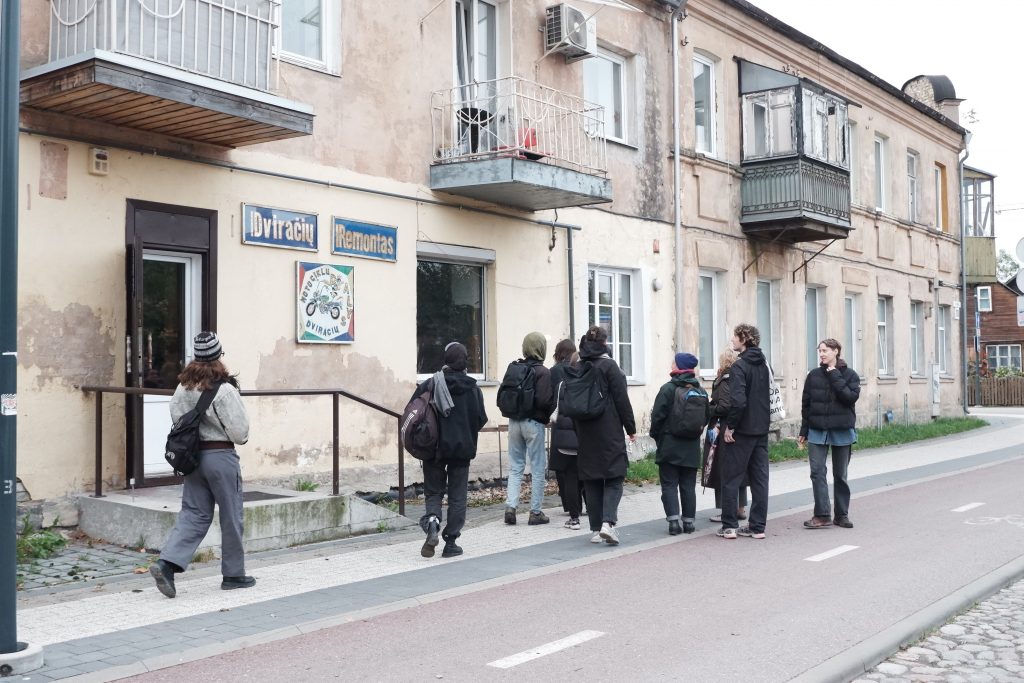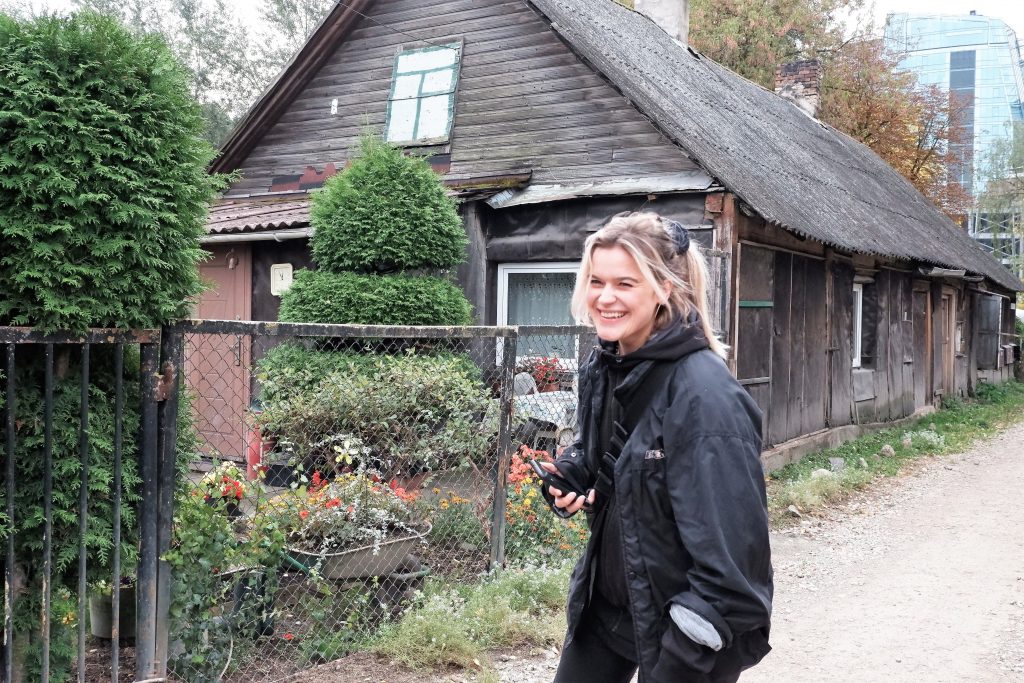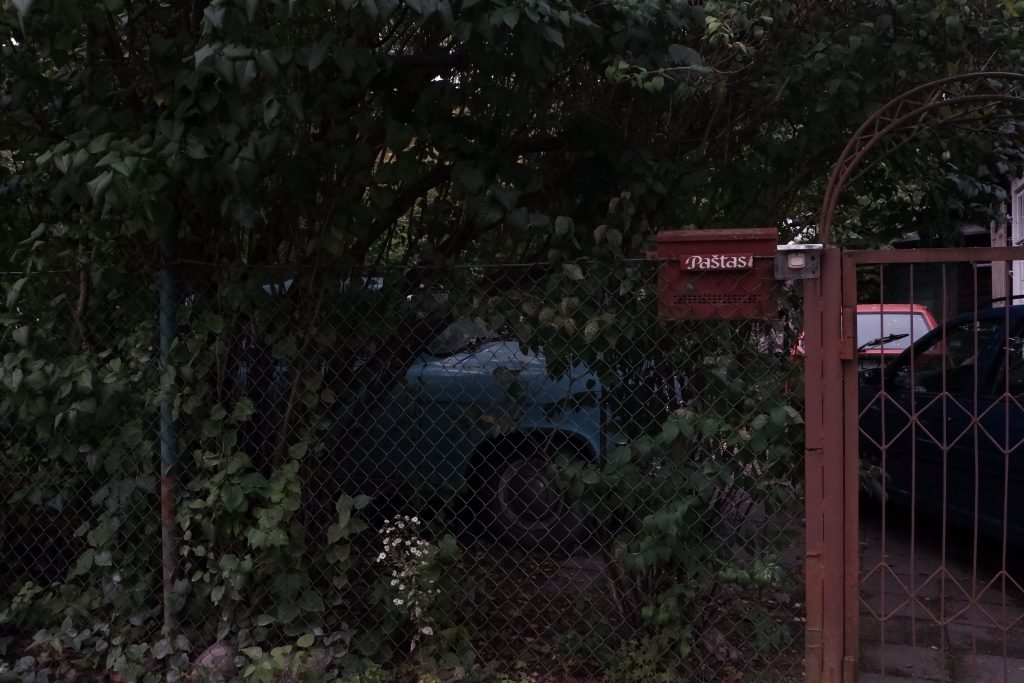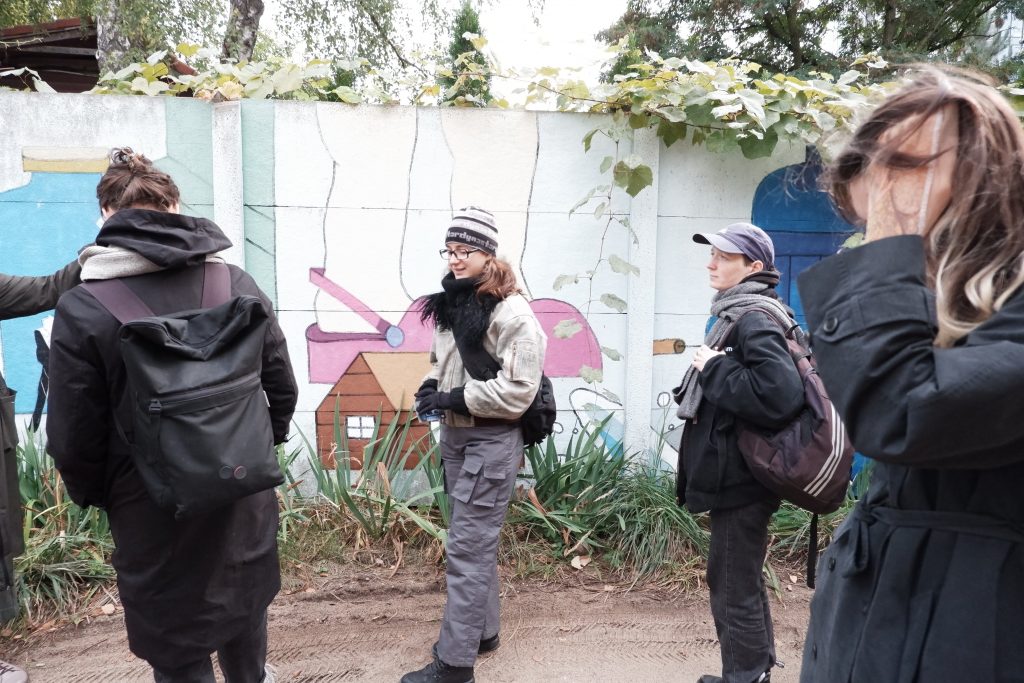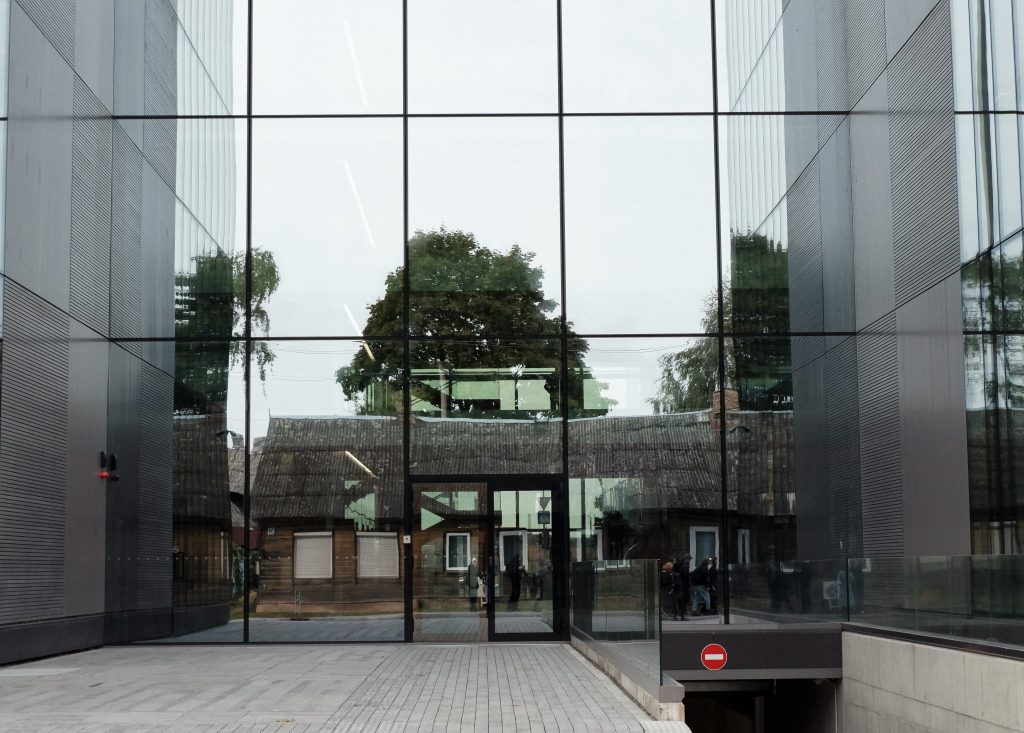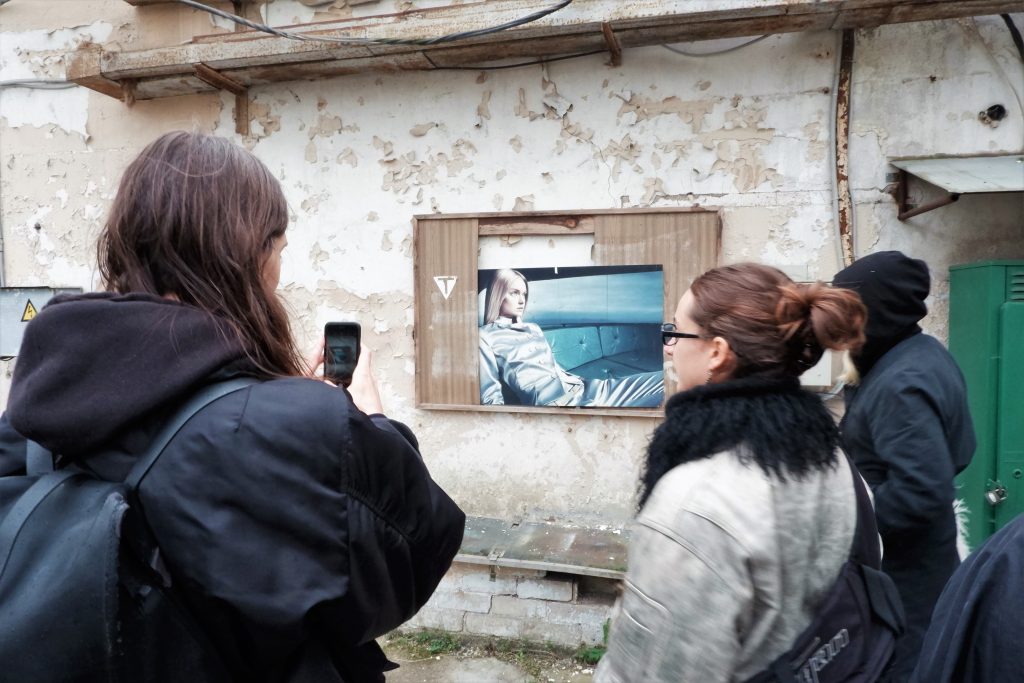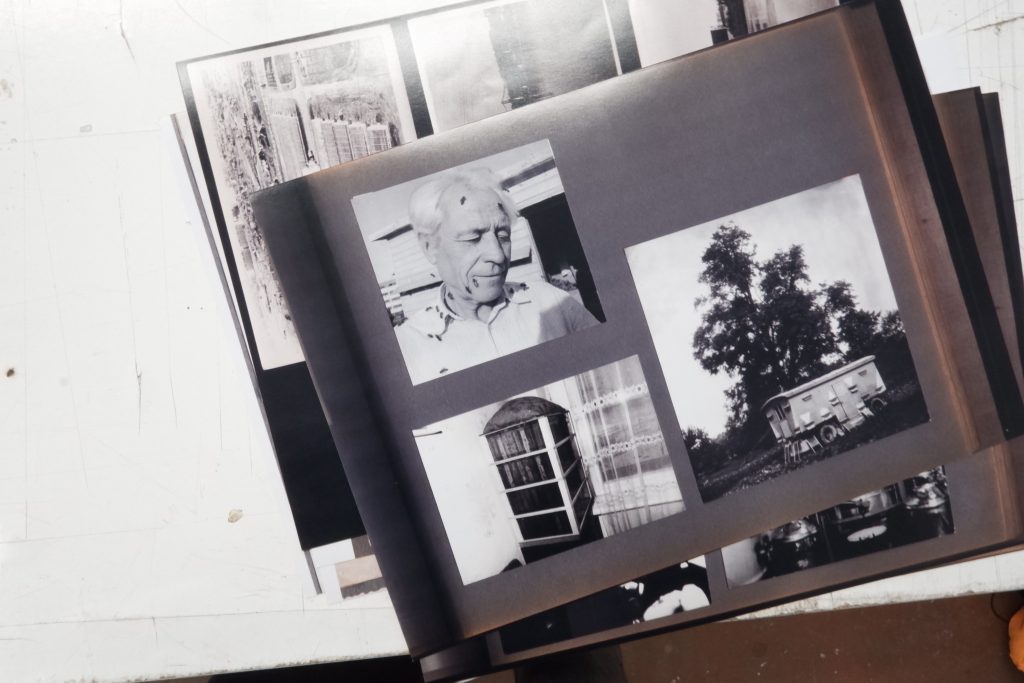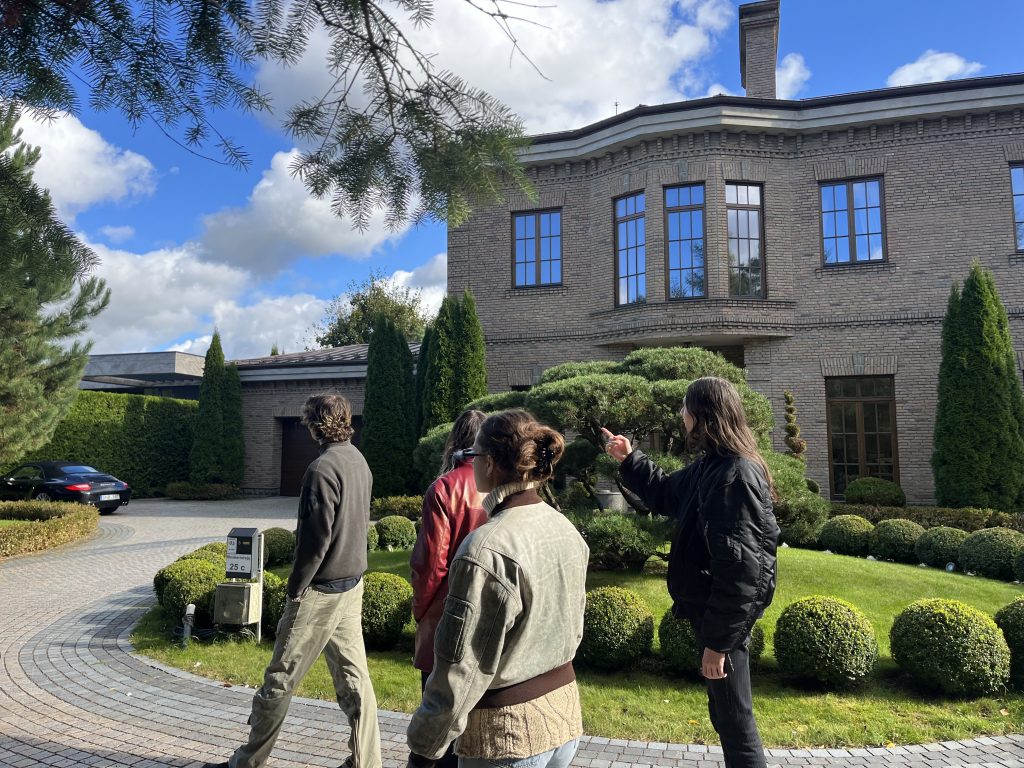Workshop w/ Anastasia Sosunova
Surrounded by the autumnal winds and shivering leaves, one morning in early October Rupert AEP participants have gathered by the Šnipiškės neighborhood, and Relics of an Unfinished World has come into existence – a two-day exploration with visual artist Anastasia Sosunova where, as the artist herself has emphasized, the tutor is the neighborhood itself.
By wandering around Šnipiškės among Vilnusians known as Shanghai, together with the help of the urban researcher Jekaterina Lavrinec, we were trying to hear the stories told by the environment and study the histories surrounding it with specific methods given by the urbanist – the wooden houses built by the end of the nineteenth century contrastingly coming into dialogue with the skyscrapers standing on the right shore of Neris was a helpful starting point. As the afternoon came, we found ourselves in Anastasia’s studio, looking at some visual relics while munching on traditional Lithuanian biscuits — the essentially cozy autumn times.
Yet, the study continued the next day as we stepped on the lands of Turniškės and Valakampiai, prominently known for accommodating the power places – presidential houses and the residences of diplomats. The conversations that arose from juxtapositioning those contrasting environments from this two-day journey found their place in the shape of the writing exercise suggested by Anastasia and some wrapping-up chats with the hot plate of collectively made mushroom soup.
. . .
Anastasia Sosunova is a visual artist based in Vilnius. Sosunova’s multidisciplinary practice, combining video, installation, graphics and sculpture, grows from personal histories and their entanglements within broader cultural, economical and spiritual structures. Her work focuses in particular on the bonds around which communities are forged, from local vernacular art to social neighbourhoods to religious organisations. She observes how these closed groups are developed, often in reaction to other values or beings, and how they subsist through shared sentiments and the development of rituals, traditions and collective agreements.
. . .
Text: Evita Mikalkėnaitė
Photos: Evita Mikalkėnaitė, Sunna Dagsdottir
